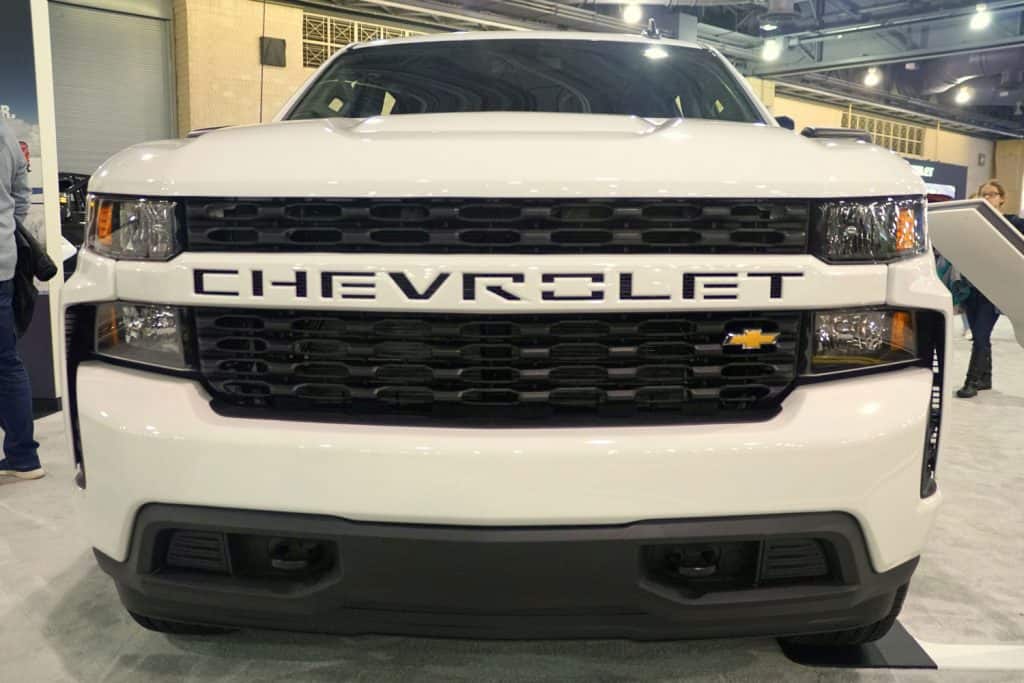Chevy Silverado trucks are great work trucks, but it’s easy to overlook some of their unique features beyond power and towing capabilities. Adaptive Cruise Control has been around for a while on sedans and SUVs, but is it offered on Silverado pickup trucks? We looked at various years, models, and trims of the Silverado to see whether or not you can get Adaptive Cruise Control on it and if it’s standard or optional.
Right now, only the 2020 and 2021 model years of the Silverado 1500 offer Adaptive Cruise Control. It is available on the LTZ and High Country trims but does not come standard. You will have to get the Safety II package on one of those two trims to get Adaptive Cruise Control. You can expect to pay at least $46,930 and up for the LTZ trim and the Safety II package.
Unfortunately, it's not yet available on the Silverado HD 2500, HD 3500, or on any previous generations of Silverado trucks.
In that regard, Chevy is a bit late to the Adaptive Cruise Control game for pickups, which is odd considering that other truck manufacturers have offered it for a couple of years now. If you’re wondering what Adaptive Cruise Control (ACC) is and how it’s different than normal cruise control, then read on as we explain how the Silverado 1500’s ACC works and when it should be used.

What is Adaptive Cruise Control?
Adaptive Cruise Control is a step up from traditional cruise control, where you set a select speed for your vehicle, and it maintains that speed without you having to push the gas pedal. ACC maintains a selected speed and a set distance from other cars in front of you, and it will both brake and accelerate. Imagine ACC as a sort of technological stepping stone toward self-driving cars. You can check out our in-depth guide on Adaptive Cruise Control in pickup trucks to see which other truck models have it and whether it’s a worthwhile investment.
How does Adaptive Cruise Control work?
Adaptive Cruise Control uses similar technology to driver-assisted braking systems. Have you seen a commercial where the car detects something in front and automatically applies to brakes to stop a collision? That’s the driver-assisted braking system, which uses cameras or other sensors to detect any objects or vehicles in front of you. ACC uses that technology to detect a car in front and maintain a set distance. While it uses the same tech behind the safety-oriented automated brakes, ACC is more a feature of convenience than safety. Adaptive Cruise Control has been around for several years now, and the technology behind it is only improving.

The limitations of Adaptive Cruise Control
ACC is only a driver-assist system, which means that it doesn’t replace a human driver. You need to be paying constant attention to the road with your hands on the wheel. ACC is best used for long, straight stretches of road like the highway, but it cannot turn for you or keep you centered in your lane. It also has limited braking capacity, so while it will brake for you, it won’t act properly in emergencies where you’d need to slam on the brakes. While it is rare to find ACC without a driver-assisted braking system, those safety measures are only meant to be used as an aid. Human drivers are still better at braking in emergencies than automated systems.
Many manufacturers have their own take on Adaptive Cruise Control, which can create varying results depending on what sensors they use. Some cruise control systems have trouble in certain driving conditions than others. If your vehicle has a form of ACC, you can check your owner’s manual to see when it should and shouldn’t be used. All forms of bad weather, such as rain, snow, and fog, severely limit ACC’s ability to detect vehicles ahead, which is why you should turn it off in such cases.
The Adaptive Cruise Control on a Silverado
The Adaptive Cruise Control on the Silverado 1500 uses a front-facing camera mounted near the rearview mirror. While the camera's high placement gives it a decent angle to view the road, it also creates a blind spot in front of the bumper that can hide objects or low-to-the-ground vehicles. An example of this might include a truck with an empty bed, which will be lower to the ground. The ACC will detect the truck’s cabin, but it might miss the bed entirely and misjudge the distance. You’ll also need to make sure that the camera’s vision isn’t impaired by any dirt, debris, ice, snow, or rain.
Is it OK to use cruise control while towing?
It depends on the make and model. The owner’s manual for the Silverado 1500 warns explicitly not to use ACC when carrying a heavy load in the bed or towing. The trailer's extra weight extends the brake time, and the Adaptive Cruise Control on a Silverado isn't programmed to account for it. Some manufacturers have developed cruise control that can account for the extra weight, such as Ford, but it’s still not available on Silverado trucks. This could also be why Chevy still doesn’t offer Adaptive Cruise Control on the souped-up Silverado HD 2500 and HD 3500. Chevy's ACC is not currently compatible with towing.
Does adaptive cruise control work at night?
Yes, Adaptive Cruise Control will work at night. It can pick up the taillights of vehicles ahead of you and maintain the proper distance. However, various lighting conditions might affect the Silverado ACC's ability to detect cars in front of you since it's camera-based. Dawn, dusk, and sudden light changes from entering or leaving tunnels will decrease the ACC’s effectiveness. It also won’t detect any vehicles that don’t have their lights on when it’s dark out. A full list of potential problems affecting the ACC’s camera is listed in the owner’s manual for the Silverado 1500.
Does adaptive cruise control save gas?
While Adaptive Cruise Control theoretically saves gas, it’s not clear how much gas it will save. ACC systems maintain consistent speeds compared to the average person, saving the amount of gas used. Studies conducted by National Resources Canada found that keeping a constant speed can save gas consumption by up to 20% compared to slowing and accelerating within five miles per hour every 18 seconds. ACC's practical uses are limited to straight stretches of road and traffic jams, so it’s hard to tell how much gas ACC will save. Everyone drives differently, and ACC might save more gas for others depending on their habits.

Now that you have a good understanding of what Adaptive Cruise Control is and its limitations, you can decide whether you need it in your next Silverado or not. If you already own a Silverado, check out these six different ways you can earn some extra cash using your pickup truck. Remember that humans are still the best judge of road situations: don’t rely too heavily on ACC. Always keep your eyes on the road and hands on the wheel. We hope to see ACC become available on the HD 2500 and HD 3500 in the future, but we’re unsure when it’ll arrive.
